Gordon G. Chang's Blog, page 2
February 20, 2017
China Threatens to Deny Passage Rights through Peripheral Seas
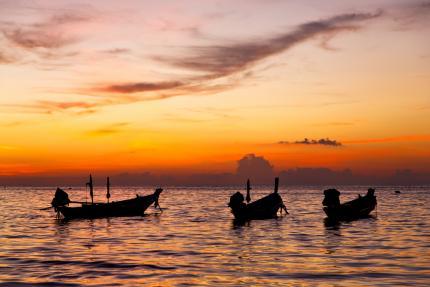
On Tuesday, Chinese state media reported that the Legislative Affairs Office of the State Council is considering amendments to the 1984 Maritime Traffic Safety Law. “The revisions are based on the UN Convention on the Law of the Sea and Chinese laws on the seas, adjacent areas, and exclusive economic zones,” noted the Global Times, a tabloid controlled by the Communist Party’s People’s Daily.
If enacted, the amendments, slated to take effect in 2020, would violate Beijing’s obligations as a signatory to the UN Convention on the Law of the Sea. Specifically, the changes would require foreign ships to obtain permission to pass through “Chinese waters.”
China’s rules are inconsistent with the internationally accepted concept of “innocent passage,” which is incorporated in Section 3 of UNCLOS, as the UN convention is known, and recognized by customary international law.
In general, foreign warships under the innocent passage rule may expeditiously transit the territorial waters of a coastal state without permission if they do not engage in certain activities.
The effect of China’s proposed rules, which the Communist Party first signaled in late 2015 at its Fifth Plenum, depends on how expansively Beijing interprets “Chinese waters.” China’s official maps show nine or ten dashes that enclose about 85 percent of the South China Sea. Beijing takes the position it has sovereignty to every island, shoal, atoll, rock, and other feature inside that infamous line.
China has not, however, clarified whether it claims the waters inside the “cow’s tongue,” as the bounded area is called, as sovereign. The official Xinhua News Agency in 2011 made a statement that can only be interpreted as a claim to all such waters.
It is nonetheless clear Beijing would like to control those waters as well as waters beyond the nine-dash boundary. It seized a US Navy drone in December in an area outside the cow’s tongue.
The US and claimants to South China Sea features are unlikely to recognize any law that China enacts as described by state media last week. As Secretary of Defense James Mattis said on February 4th, “Freedom of navigation is absolute, and whether it be commercial shipping or our US Navy, we will practice in international waters and transit international waters as appropriate.”
If anything about US foreign policy has been consistent over time, it has been the defense of its right to “fly, sail, and operate” in international waters and airspace. And America has always had an expansive notion of the global commons.
“China should take the lead to establish the legal order in the Yellow Sea, the East China Sea, and the South China Sea,” says Yang Cuibai of Sichuan University, as paraphrased by Global Times. There is already such a legal order. Beijing recognized it when it ratified UNCLOS in 1996, and it is the order enforced by the US Navy and Air Force and accepted by most nations.
Beijing has just put the world on notice it intends to control international waters. That is a challenge seafaring nations cannot ignore.
OG Image: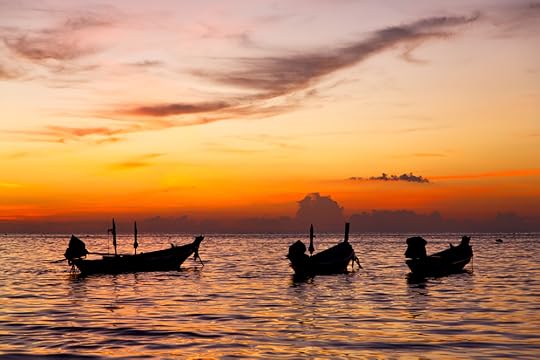 Asia PacificChinaUNUSUN
Asia PacificChinaUNUSUN
February 10, 2017
China’s Timed Provocation Challenges the US

On Monday, three Chinese coast guard cutters entered Japan’s territorial waters around the Senkaku Islands, in the East China Sea, just two days after Secretary of Defense James Mattis publicly reassured Tokyo that the United States would defend the islands. The Chinese craft, which did not have permission for the incursion, loitered for two hours.
If Mattis’s words are to mean something, the US and Japan need to respond to China’s aggressive behavior.
In December 1971, China made an official claim to the Japanese-administered islands, which Beijing calls the Diaoyus. Taiwan also believes it has sovereignty over the barren and uninhabited outcroppings.
Taipei, a model international citizen when it comes to sovereignty disputes, has engaged in negotiations with Tokyo to settle differences. Indeed, Japan and Taiwan reached a landmark fishing agreement in 2015 regarding waters around the Senkakus.
Beijing, on the other hand, has resorted to force, regularly entering Japan’s territorial waters and airspace. Last year, there were, according to Tokyo, 36 Chinese incursions. Monday’s incident was the fourth this year.
The timing of the most recent incursion was significant. “Despite the frequency of the Chinese sailings,” CNN stated, “experts said having one so soon after Mattis’s visit to Japan sent a subtle message to both Tokyo and Washington.”
Message? Yes. Subtle? No.
Beijing was dismissing Mattis and the United States, essentially saying that words meant little. And in a sense, the Chinese are correct.
Until now, Washington has downplayed the Senkaku dispute, just as it has hoped to avoid confronting belligerent Chinese conduct in the South China Sea. This approach, however, has failed. I would argue that Chinese belligerence around those East China Sea islands is the direct result of Washington’s failure to meaningfully respond to Beijing’s belligerence elsewhere.
Case in point: Leading up to Beijing’s seizure in early 2012 of the disputed Scarborough Shoal, a feature in the South China Sea that was generally agreed to belong to the Philippines, Washington persuaded Manila to withdraw its craft from the vicinity after it had extracted a promise from Beijing to do the same. The Philippines followed the US lead, China did not and thereby took the shoal. Washington, unfortunately, did nothing in response. Beijing has remained in control of the feature since then.
Having taken Scarborough without cost, China has simply moved to their next objective, the disputed Senkaku Islands. And how are things going? According to Japanese Prime Minister Shinzo Abe, “Since the fall of 2012 Chinese government vessels have sailed near the Senkaku almost daily, and have entered Japan’s territorial waters around the islands a few times a month.” China, in short, stepped up the pressure on Japan soon after their aggression was rewarded at Scarborough Shoal.
China has no respect for American warnings and, therefore, the provocations will continue.
If the US and Japan are to stop these incursions around the Senkakus, the US Navy and the Japanese Maritime Self-Defense Force should station warships in the area. If the presence of American warships does not deter China, then Washington and Tokyo should unambiguously declare that they are prepared, if necessary, to use force to prevent foreign vessels from entering Japanese waters.
Mattis said that these islets are covered by Article 5 of the US-Japan mutual defense treaty. It is time to show China that Washington is as good as its word.
OG Image: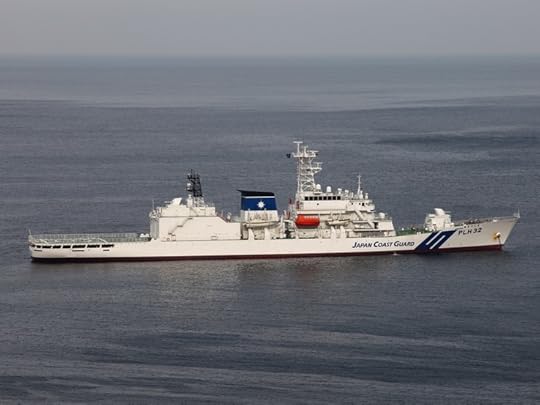 Asia PacificNorth AmericaChinaUSJapanTaiwanUnited StatesJames Mattis
Asia PacificNorth AmericaChinaUSJapanTaiwanUnited StatesJames Mattis
February 3, 2017
Missile Defense, North Asia Security on Mattis's Agenda
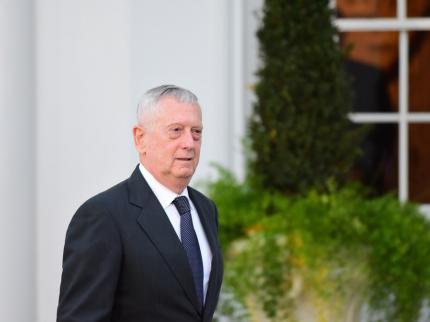
James Mattis, the new secretary of defense, spoke to his South Korean counterpart Tuesday, confirming to Defense Minister Han Min-koo the US commitment to defend his country “against the evolving North Korean threat.”
The pledge, given over the phone days before his visit to Seoul, followed President Trump’s telephone conversation with the South’s acting president, Hwang Kyo-ahn, Sunday. During that call, the American leader reiterated the US’s “ironclad commitment” to defend the Republic of Korea, as South Korea is formally known.
Trump, according to the White House, also mentioned “the provision of extended deterrence, using the full range of military capabilities,”code for America’s willingness to use its nuclear arsenal.
Many say the new administration in Washington is worried about North Korea, which this month threatened to launch a ballistic missile and which has almost certainly restarted its only plutonium reactor. Yet it is South Korea, not the North, that is of concern at this time.
The new administration is in full-reassurance mode because South Korea, rocked by a deepening impeachment crisis, is fragile at the moment. That’s why Seoul is the first stop on Mattis’s first foreign trip as Secretary of Defense. He travels to Tokyo after visiting the South Korean capital.
Mattis has a full agenda in Seoul. At the top of the list is the fate of the Terminal High Altitude Area Defense system, built by Lockheed Martin to shoot down incoming missiles. Both Mattis and Han affirmed that South Korea would go forward with the deployment of THAAD, as the system is known.
President Park Geun-hye had agreed last July to host THAAD on South Korean soil, but Beijing vigorously objected, saying the US could use its radar to look across the border into China. Since the decision to deploy, the pro-THAAD Park was removed from office, impeached by a lopsided vote of the National Assembly in December. Her fate is now in the hands of the Constitutional Court, which can either confirm the removal or reinstate her.
Beijing has taken advantage of the political uncertainty to try to reverse Park’s decision on the missile-defense system. China has, to this end, imposed not insubstantial costs on the South Korean economy, most notably,stopping charter flights between China and the South, limiting Chinese tourists going to the South, barring South Korea’s K-pop groups from performing in China, and prohibiting the import of South Korean cosmetics. South Koreans fear Beijing will turn up the heat should Seoul continue with its decision to deploy. China is the South’s largest trading partner, so Beijing’s actions have made South Korea jittery.
The Chinese are not the only group to exploit Park’s worsening predicament. The South’s so-called “progressives”—in reality, leftists—have been energized by developments and are now leading the race to capture the Blue House in the next presidential election, to be held this year. Should they win, they will undoubtedly stop THAAD deployment, thereby emboldening China to help North Korea even more.
And the progressives will downgrade relations with Japan. Conservative governments, pushed by the progressive left, delayed for years the signing of the General Security of Military Information Agreement, an intelligence-sharing pact, which was finally inked in November.
South Korea and Japan are not treaty allies, although each has a treaty relationship with Washington. Japan can get along without South Korea, but South Korea, tucked in between North Korea and Japan, desperately needs Tokyo’s assistance should it ever be attacked again. The progressives, should they win the presidency this year, will surely end most, if not all, forms of defense cooperation with Tokyo.
Given all these destabilizing factors, it’s no surprise that the Mattis visit has been labeled by the Washington-insider Nelson Report as “Mission Reassurance.”
And reassurance is what North Asia needs. Trump rocked the region last March when he suggested Washington might abandon its defense commitments to Seoul and Tokyo. Despite walking back those comments, there is a lingering belief that the new American president views defense ties with deep skepticism. “My biggest concern is does Trump really mean it,” said Robert Kelly of Pusan National University to Stars and Stripes, referring to his affirmation of the alliance with South Korea. “He’s made it very clear that he sees America’s allies in transactional terms.”
Mattis deserves credit for recognizing that his first trip should be to volatile North Asia, but years of his efforts—and those of President Trump—will be needed to restore stability to the deeply troubled region.
OG Image: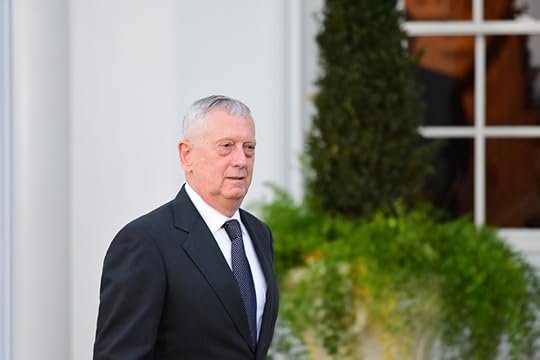 Asia PacificNorth AmericaAsiaSouth KoreaUSNorth KoreaJames Mattis
Asia PacificNorth AmericaAsiaSouth KoreaUSNorth KoreaJames Mattis
January 24, 2017
Church Condemns Duterte's Bloody War on Drugs
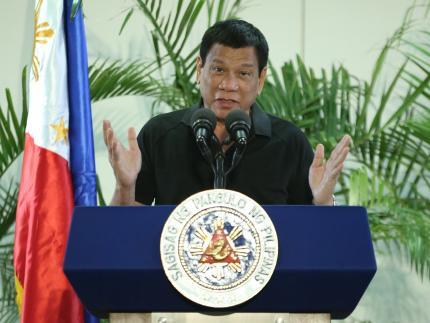
“It looks like he’s having a breakdown,” said John Batchelor on his nationally syndicated radio show on January 18. That day, Philippine President Rodrigo Duterte had told Catholic priests to take shabu, methamphetamine, if they wanted to understand his war on drugs.
Or more precisely, his war on drug dealers, which according to a recent count has claimed the lives of 7,042 people since he took office last June 30. During this time, police had been “pro-actively gunning down suspects,” the conclusion Reuters draws from a 97 percent kill rate in police raids.
The Catholic Church has been one of the few institutions in Philippine society to oppose the extra-judicial executions—essentially state-sponsored murders—and so it is no surprise that the tough-guy president has now gone after bishops and priests.
Last Thursday, in what Reuters termed a “no-holds-barred tirade,” Duterte, talking to policemen, blasted the church for homosexuality, corruption, and child abuse.
Enraged over Catholic opposition to his campaign, the Philippine leader, a Catholic, challenged the Church to a confrontation. “You asked for it,” he said. “If you want a showdown, then let’s have a showdown. You mend your ways. If you cannot even give justice to the small boys that you have molested in the past, you do not have that moral ascendency to lecture on what to do.”
It is no accident that Duterte talked about molestation when he went after the church. Last year, he claimed he had been sexually abused in his youth by a priest.
The drug campaign defines Duterte. And, in his mind it is the singular issue that divides others into friends or enemies. One of those enemies is the US. The Obama administration criticized Duterte for gross human rights abuses in connection with the war on drugs. And Duterte was quick and dismissive in his sharp response.
“The Punisher,” as Duterte is sometimes called, has gotten away with bashing Washington. Even though the US is generally viewed positively, it is a foreign power that once colonized the country. Yet bashing the Catholic Church is another story.
Some 80 percent of Filipinos are Catholic, and each Sunday many of them go to Mass, to hear their priest say what the Church’s hierarchy thinks. That gives the bishops, who represent an institution two millennia old, a pulpit—thousands of them in fact—to compete with Duterte. Yet, for now, the Church has not taken direct aim at him, choosing instead to patiently acknowledge the shortcomings he has mentioned.
Duterte will probably maintain his popularity over the next several months by railing at the Church. But this is one fight extremely difficult for him to win in the long run. The Catholic Church, after all, has a long history of dealing with recalcitrant secular leaders, and it usually prevails. Eventually, Duterte’s brutal campaign will surely lose support as police excesses become too blatant to ignore. It seems only a matter of time, therefore, that the bishops will make him bend—or force him out.
Duterte said that if God is displeased with him, He should come down and help him rid the Philippines of pushers. Although one assumes He will not travel to the Philippines any time soon for this purpose, it is likely that His clerical representatives will engage the president. And, if history repeats, it is highly unlikely the president will be pleased with the intervention.
OG Image: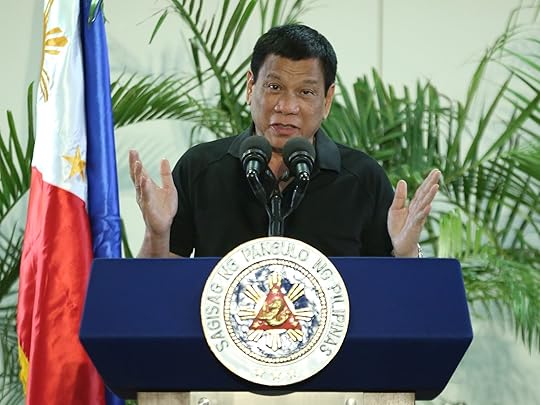 Asia PacificPhilippinesRodrigo Duterte
Asia PacificPhilippinesRodrigo Duterte
January 16, 2017
Can Japan's Abe Bridge the Duterte-Washington Divide?
Japan’s Prime Minister Shinzo Abe visited the Philippines Thursday and Friday last week. He is the first head of government to pay a call on President Rodrigo Duterte, who took office at the end of June.
The meeting between the two leaders reminds one of Abe’s common touch and how valuable he could be to help bridge the divide that has grown between the US and a most troublesome ally.
To many Filipinos, the highlight of the visit was the breakfast the two shared at Duterte’s home in Davao City, a populous city on the southern island of Mindanao where Duterte previously served as mayor. Indeed, the Philippine media gushed about the informal and intimate quality of the encounter.
Abe is making an effort to secure good relations with the volatile Duterte, perhaps with the idea of bringing him back into the American fold, from which he has drifted in recent months.
Besides “breakfast at Duterte’s”, Abe is currying favor by supporting his No. 1 project, the war on drugs, by offering funding for a rehabilitation center.
This is the same drug war that has created friction between Duterte and Washington, which happens to also be the Philippines’s only formal ally.
President Obama criticized the Philippine leader’s aggressive dealing with his country’s pushers, which has included gunning them down in a shockingly harsh campaign. “Duterte Harry” has even urged the public to kill dealers, promising pardons for such extra-judicial actions.
Duterte, who also appears to be genuinely anti-American, has reacted to Washington’s human rights criticisms by extraordinary overtures to Beijing and Moscow. “I am Chinese,” he famously saidon state broadcaster China Central Television in the middle of October while in the Chinese capital.
Although the Philippines hasn’t severed ties with the US,Manila’s relationship with Washington is at a multi-decade low, and there’s concern about further deterioration. For instance, Washington and the region’s capitals worry that the Philippine president will permit the Chinese navy and air force to pass through his country’s waters, thereby breaking “the first island chain” and giving easy access out of the South China Sea to the Western Pacific.
Enter Abe. With his personal diplomacy, the Japanese leader is obviously intent on developing a bond with the recalcitrant Duterte, who in any event could use Tokyo’s largess. And, Abe did not disappoint. Going well beyond rehab centers, he announced an $8.7 billion aid package on his just-completed visit.
In fact, Abe has ample incentive to encourage Duterte to join his effort to thwart China’s aggressiveness in the region’s waters. Abe and Duterte’s countries are both threatened by Beijing’s expansionist impulse. China grabbed Mischief Reef in the early 1990s—after an earlier bout of Philippine anti-Americanism—and seized Scarborough Shoal in 2012. China is now threatening Manila’s Second Thomas Shoal, also in the South China Sea.
At the same time, Beijing is using forceful tactics to pry the Senkakus from Tokyo’s administration, and Chinese officials have launched a concerted campaign to take Okinawa and the rest of the Ryukyu chain.
Because Duterte cannot concede sovereignty of any part of his country to China—what Beijing demands—the Philippine leader, whatever he may personally want to do, cannot get too close to China. Yet he appears intent on distancing his country from Washington, so America needs Abe to keep Duterte in check.
Keeping Duterte in check will take patience and careful diplomacy, but Abe, who now looks like he will remain in power for the rest of this decade, seems up to the task.
OG Image: [image error]Asia PacificNorth AmericaJapanPhilippinesUnited StatesDuterteShinzo Abe
January 4, 2017
Will North Korea Conduct Intercontinental Missile Test?
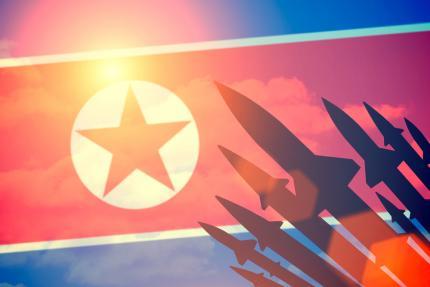
Within hours of Kim Jong Un’s televised New Year’s address, the Pentagon issued a statement urging countries to impose “consequences” on North Korea should it test a ballistic missile. The North’s leader suggested his regime will soon conduct an “intercontinental ballistic rocket launch,” which appears to be code for a missile test prohibited by the UN Security Council.
Donald Trump also reacted. On Monday, he suggested the young Kim will not make good on his first boast of 2017. “It won’t happen!” declared the president-elect in a tweet.
Kim has three missiles—the Taepodong-2, the KN-08, and the KN-14—capable of reaching the lower 48 states. None of them is thought to be reliable or accurate. But a test firing, especially an unsuccessful one, will provide Kim’s technicians with data to help them correct deficiencies.
Given that Kim accelerated missile testing in the year just ended, his technicians are closing in on mating a nuclear warhead to a long-range missile and developing heat shielding. Many believe the North will have a deployable intercontinental ballistic missile in, say, four years. Little wonder that the White House reportedly told the Trump transition team that North Korea is the “top national security priority” for the incoming president.
One cannot know why Kim chose to threaten a missile test in Sunday’s address, but perhaps he senses a window of opportunity with Washington in the middle of a transition of power and Seoul preoccupied by the impeachment of President Park Geun-hye.
Xi Jinping could act should he choose to do so. Yet during his four years as China’s ruler he has done little to impede the North Korean ballistic missile program. And it has cost him nothing in his relations with the US or the rest of the world. It is thus unlikely he will help Washington rein in his country’s only formal military ally, the Democratic People’s Republic of Korea, given that senior generals are thought to be especially supportive of Pyongyang.
There are always internal constraints on Kim—most notably, the availability of resources—but at the moment external ones appear lacking. The risk of provocation from Pyongyang, in what looks like a period of little or no opposition, is therefore high.
The incoming Trump administration, therefore, could be faced with a crisis in North Asia before the lights go out at the inaugural balls.
OG Image: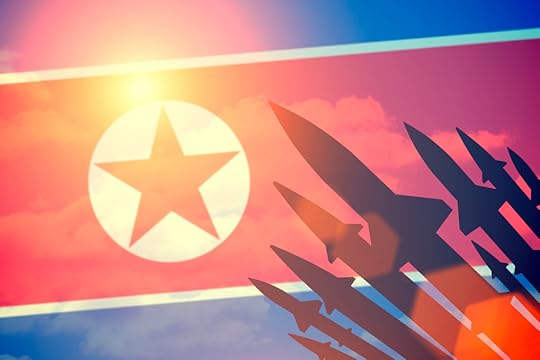 Asia PacificNorth AmericaKoreaNorth KoreaUNUSChinaSouth KoreaUnited StatesUNPresidentPentagonDonald TrumpKim Jong Un
Asia PacificNorth AmericaKoreaNorth KoreaUNUSChinaSouth KoreaUnited StatesUNPresidentPentagonDonald TrumpKim Jong Un
December 29, 2016
Did Trump Renew the Nuclear Arms Race?
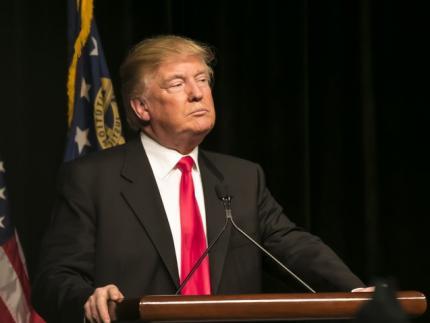
“Can a tweet start an arms race?” asked Joseph Cirincione of the Plowshares Fund. “This one may just have done that.”
Arms-control advocate Cirincione was referring to President-elect Donald Trump, who declared last Thursday on Twitter that “the United States must greatly strengthen and expand its nuclear capability until such time as the world comes to its senses regarding nukes.”
Trump’s statement was right on the mark, even if it lacked months of interagency review. And, no, it did not start another competition to build the world’s most destructive weapons. That contest, unfortunately, is already under way.
Many wonder why the president-elect, seemingly out of the blue, would tweet about this subject.
Trump’s advisors and spokesmen have provided various explanations, but Thursday’s tweet is rather a warning, something the president-elect made clear on Friday to Mika Brzezinski, the co-anchor of MSNBC’s “Morning Joe.” “Let it be an arms race,” Trump stated “We will outmatch them at every pass and outlast them all.”
North Korea, judging from its accelerated testing schedule, is developing its arsenal at a fast clip. And although Beijing discloses next to nothing about its stockpile, the Chinese appear to be adding weapons quickly, something analysts infer from its rapid addition of missiles.
Yet it is Russia, due in part to the number of its warheads, that is of special concern. The speculation was that Trump was responding to a comment, made earlier Thursday, by President Vladimir Putin, who in a speech talked about modernizing his country’s nuclear forces.
Others disagree, pointing out that the Kremlin leader frequently talks about nukes so Thursday’s speech was not the motivation for Trump. Indeed, Putin’s comments Thursday were bland compared to his past statements on the topic. The Russian leader, after all, has threatened to use these weapons offensively to grab the territory of other nations, especially Ukraine and the Baltics.
Whether it is Putin’s words or not that triggered Trump’s tweet, the president-elect was probably speaking to Moscow, which has been violating the Intermediate-Range Nuclear Forces Treaty of 1987. The Obama administration, in addition to lapses in candor, has been loathe and slow to challenge the Kremlin for the apparent violations of testing ground-launched cruise missiles with ranges of over 500 kilometers.
Although the violations have been known for years, since about the time Obama took office, it was not until July 2014 that the administration got around to formally calling the Russians to account.
The inaction of the White House has been deplorable, dangerous, and consequential. The INF treaty, as the pact is known, has been considered a “cornerstone” of post-war security.
Moreover, many suggest that Moscow has also been cheating on New START, the agreement the US and Russia signed in 2011 to limit deployed strategic warheads.
As many have noted in the last few days, American policy on nuclear weapons should not be made on the fly and communicated by Twitter, but on the other hand Putin must be challenged. If the president won’t speak up, then let the president-elect. Trump is to be applauded, not condemned, for starting a critical conversation.
And not a moment too soon because while Russia, China, and North Korea have been bulking up, the US has been slimming down. Moreover, all three legs of America’s nuclear “triad”—missile submarines, land-based intercontinental launchers, and strategic bombers—need modernization. The cost will be high, now estimated to be a trillion dollars, spread out over the course of three decades.
In a very real sense these aging weapons are on deterrence duty every day to defend the homeland and America’s allies. They must be modernized. Fortunately, that process has started, by the president-elect expressing his thoughts 140 characters at a t
OG Image: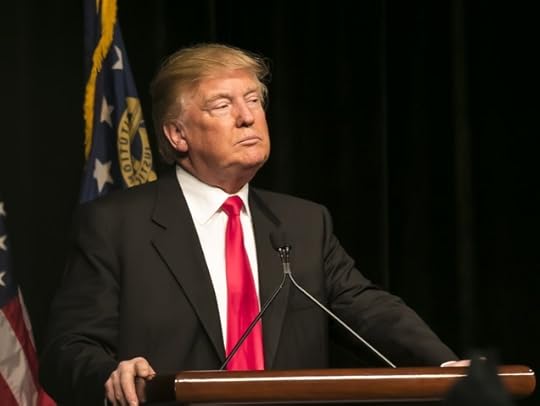 Asia PacificEurope and Central AsiaNorth AmericaUSUnited StatesPresidentDonald Trump
Asia PacificEurope and Central AsiaNorth AmericaUSUnited StatesPresidentDonald Trump
December 21, 2016
China’s Smog Refugees Flee Poisonous Air
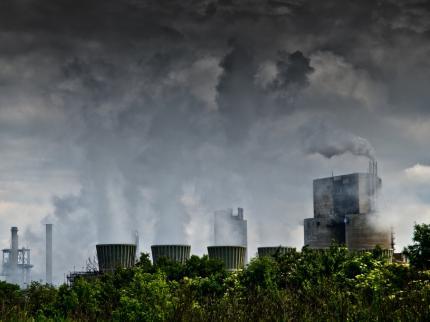
Much of northeastern China was under an air emergency the early part of this week, with 460 million people affected according to one estimate. On Tuesday, 24 cities had posted the red alert signal.
Under the alert, Tianjin closed all roadways leading to the city but one. In next-door Beijing, more than 700 enterprises stopped production. Airports cancelled flights as planes could not land in the goop. Governments warned people not to go outside. Even short travel to North China, a friend wrote to me this week, is a “Death Warrant.”
No surprise North China’s residents are temporarily leaving the region, making them “smog refugees.” As the South China Morning Post reports, “Legions of Beijing residents are fleeing the capital and heading south in search of cleaner air as the year’s worst smog lays siege to the city.”
Flights to other Chinese destinations are fuller than usual, and many citizens were traveling abroad. Online travel agency Ctrip.com estimates a million Chinese each year travel to other countries in search of clean air.
This year’s “airpocalypse”—temperature inversions in Chinese winters trap pollutants for long periods—is particularly nasty. The level of PM2.5, the fine particles that damage human lungs, reached more than 1,000 micrograms per cubic meter in Shijiazhuang, the capital of Hebei province. The World Health Organization recommends air contain no more than 10 micrograms over the course of a year.
The Communist Party and the central government each year follow the same playbook, trotting out experts who attempt to minimize the hazards. In addition to telling the world that China’s air is continually improving—something many Chinese residents dispute—state-backed experts like to make comparisons with the US.
“Economic reform and policy is going in the right direction,” said Wang Min of Peking University to the Financial Times this week. “But we may need another 20 years to solve this problem, just as America did in the 1960s.”
“Forty years ago, Los Angeles was the same as us,” Jack Ma, the founder of Alibaba Group, said in 2013 to Time. “If they can fix it, why can’t we? And if we do it smart and we take it seriously, we can do it even quicker.”
To begin with, it is wrong to suggest that LA’s air quality ever reached China’s grotesque levels. Moreover, Ma and others do not see the one critical difference between the self-corrective capacity of China and the United States. The US is a democracy, and, as imperfect as its form of government may be, bottom-up pressure can force change. China’s increasingly coercive top-down system stifles it.
“The government is under too little pressure,” writes an online poster using the moniker HJ. “It’s not enough to make them reform and make people’s lives their top priority.” And HJ, who is probably not former leader Hu Jintao, makes this point: “The people are under too much pressure—if we try to protest, we’re said to be ‘creating public disorder.’ ”
The Communist Party’s defenders—and even some of its critics—point to its political system as meritocratic, but unfortunately authoritarianism works against clean air—and clean water and clean soil for that matter.
Lauri Myllyvirta of Greenpeace in Beijing has established that link. “Since the second quarter of this year, when steel prices and output started growing, we saw air quality decline in the north-east,” he told the FT. “It’s a result of the government’s old-fashioned stimulus that boosted the industrial sectors.”
To finish this thought, China’s state enterprises, which Chinese leader Xi Jinping has strengthened in his effort to bolster Communist Party rule, have become increasingly powerful in Beijing circles. They have used newly found political clout to enrich themselves through many means, including getting the government to launch stimulus programs and to provide subsidies so that they can continue to produce steel and other industrial goods far in excess of commercial demand. Their emissions have contributed to the air emergencies of this week—and previous years.
It took too long for American citizens to clean their air, but they had the ballot box to force change on reluctant officials and business interests.
Chinese citizens, on the other hand, know they can’t push their leaders very far. That’s why they just flee.
OG Image: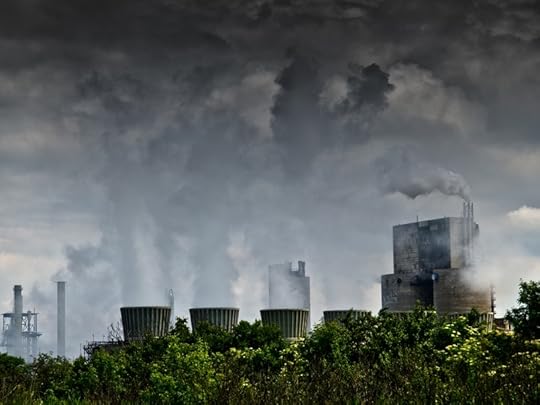 Asia PacificChinaPollution
Asia PacificChinaPollution
December 19, 2016
Will China Retaliate Over Trump’s Taiwan Moves?
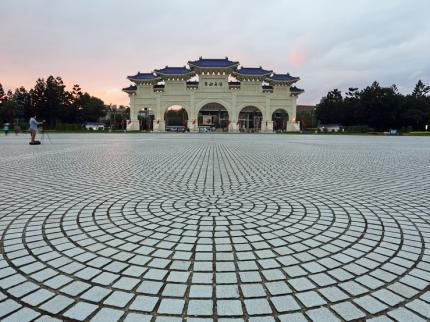
American businesses seem concerned they could be subject to Chinese retaliation for the recent pro-Taiwan moves of President-elect Donald Trump.
And there is reason for apprehension. On December 2, Trump took a call from Taiwan’s leader, Tsai Ing-wen. The Trump staff summary of the conversation reports the president-elect called Tsai “President of Taiwan,” suggesting he considered the island a sovereign state, a position anathema to Beijing.
Moreover, on Sunday in comments to Chris Wallace of Fox News, Trump questioned whether he was bound by America’s One-China policy, thought to be the foundation upon which relations have developed since 1979 when Washington broke off formal relations with Taipei.
Chinese state media has threatened stern measures in retaliation for any Trump deviation from the One-China policy, and American business is echoing that line “The Chinese are deeply concerned, and we hear now from reliable sources in Beijing who suggest the Chinese government, the Communist Party, are developing lists of US interests against which they could retaliate, commercial interests, and obviously one merely has to look at top US exports to China to get a quick sense of whose heads may be on the chopping block,” said “one China trade policy expert who interacts closely with US business” to Reuters. “People feel off-balance right now,” said Kenneth Jarrett, president of the American Chamber of Commerce in Shanghai, to Bloomberg. “When there is a sour relationship between the US and China, everyone is affected.”
Of course, exporters and those with manufacturing operations in China are subject to Beijing’s wrath, but in 2010 China threatened to sanction American companies selling weapons to Taiwan yet did not carry through.
Regardless of the heated mood in Beijing, there are two principal reasons why Chinese leaders might not act this time either.
First, China runs large goods and services surpluses against the US, a whopping $334.1 billion last year. So China needs America more than America needs it. Chinese exporters, already ailing because of an artificially inflated renminbi and other reasons, cannot replace the American market, but America can replace them by buying shoes, toys, and clothes elsewhere.
Trade-surplus countries generally do not do well in trade wars because trade-deficit countries do not have much to lose. As He Weiwen of the China Association of International Trade told the New York Times last month, “We don’t have many things in the toolbox for retaliation, because we export more than we import.”
Trump himself knows he’s in the driver’s seat. “We have trade power over China,” he told the Washington Post in March. The Chinese, therefore, will have a difficult time bluffing him in a prolonged contest of will.
Second, China’s manufacturing sector, already in distress, is critically dependent on its reputation as a reliable member of global supply chains.
If Beijing were to elevate its geopolitical objectives over its economic ones and disrupt those chains to enforce its aggressive claim to Taiwan, it would put its entire manufacturing sector at risk, not just the portion servicing the American market. As Zhiwei Zhang of Deutsche Bank points out, a trade war “would be a war against all participants of the global supply chain,” American and otherwise.
Yet despite everything, American business is still subject to geopolitical risk in China. It is not clear, however, that Trump, when president, should consider their interests above those of others. These businesses had to know, when entering the China market, they were making themselves vulnerable to an aggrieved one-party state that maintained objectives fundamentally inconsistent with the country from which they came and the liberal international system that protected them.
US businesses, wherever they operate, deserve Washington’s help of course, but perhaps not at the expense of broader, and greater, American interests.
OG Image: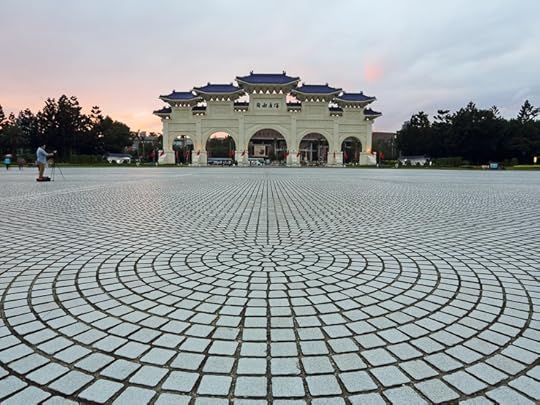 Asia PacificNorth AmericaChinaTaiwanUSPresidentDonald Trump
Asia PacificNorth AmericaChinaTaiwanUSPresidentDonald Trump
December 5, 2016
Will China Shrink in 2018, Ten Years Ahead of Schedule?
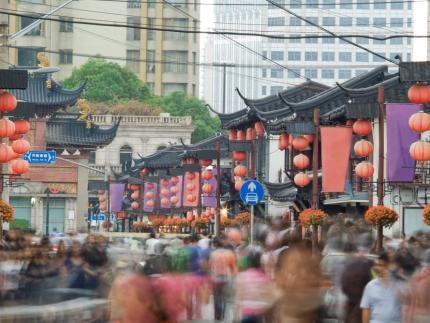
The South China Morning Post recently reported that Chinese demographers expect their country’s population to peak in 2018. That year is a full decade earlier than the highpoint projected in the UN’s most recent estimates and is yet another indication that China’s demographic problems are accelerating.
And there is little relief in sight. The official National Bureau of Statistics reports that China’s total fertility rate or TFR, the number of births per woman living through childbearing age, was a stunningly low 1.05 last year, well below the replacement rate of 2.1.
Not all of Beijing’s officials share this gloomy outlook. Caixin Online, the widely followed Chinese financial site, reports that on Saturday China’s National Health and Family Planning Commission projected the number of Chinese births to rise 5.7% this year to 17.5 million, 0.95 million more than in 2015. Caixin termed the surge a “mini baby boom.”
Wang Peian, the Commission’s deputy director, thinks the boom will continue for some time. China’s annual births, the official said, could hit 20 million soon, resulting in a population of 1.45 billion in 2030. Wang predicted that China’s TFR will hover around 1.8 from this year to 2020.
This century, the Commission’s figures have consistently differed from other official numbers. The 2010 census, for example, showed China’s TFR in 2000 was less than 1.4, far below the 1.8 reported by the Commission.
Why the large discrepancy? To begin with, data collection in China is always a challenge, but in the case of demography it is complicated by political imperatives. The Commission, responsible for the country’s population planning, is vulnerable because there is wide agreement that its one-child policy, liberalized last October, was kept in place far too long.
The new two-child policy, which among other things obliges parents to seek permission for a second child and does not allow single women to bear children, is considered too little and too late to prevent a long-term population slump.
The party knows that in matters of demography, unlike other areas such as the economy, it has no one to blame if dire predictions come true. And the evidence of accelerated demographic decline is becoming difficult to hide.
At the beginning of this decade, for example, UN projections showed China’s population peaking in the 2030s. That has been brought forward to 2028 in the UN’s most recent estimates, which are found in the 2015 Revision of its World Population Prospects, released last July.
Now, even 2028 looks optimistic. The projected peak year of 2018, as reported by the South China Morning Post on Saturday, could be close to the mark as it generally accords with that of Liu Mingkang. Speaking at the Asia Global Dialogue in May 2012, the prominent official admitted population would top off in 2020.
Moreover, there is other evidence of erosion. At the end of last decade China’s official demographers were predicting that the country’s workforce, the 15-59 age cohort, would hit the highpoint in 2016. The NBS reported that the peak in fact came in 2011.
Recent trends suggest that the current projections of the National Health and Family Planning Commission are overly optimistic and that China will soon face the adverse consequences of a rapidly shrinking country.
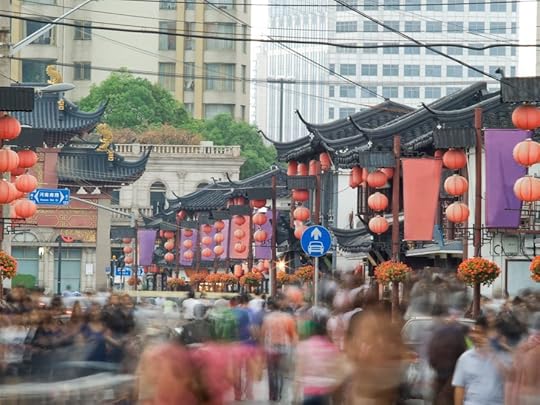 Asia PacificChina
Asia PacificChina
Gordon G. Chang's Blog
- Gordon G. Chang's profile
- 52 followers



